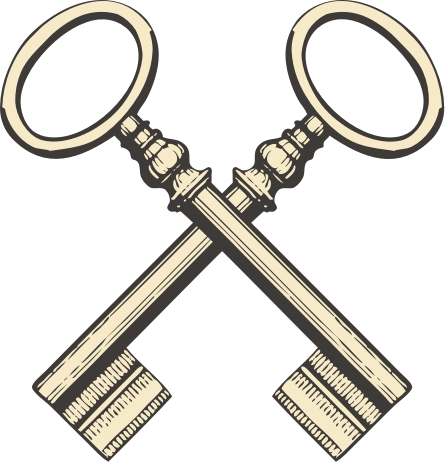 The Beatles, Picasso, R.E.M., and Marc Maron could tell you: It’s almost impossible not to fall into a rut. Life, and especially your work, compel you to do the same things over and over again. Certainly a well-worn path is effective, the most efficient route. But that rut isn’t exactly conducive to creativity, and at worst it can turn you into a zombie, going through the motions.
The Beatles, Picasso, R.E.M., and Marc Maron could tell you: It’s almost impossible not to fall into a rut. Life, and especially your work, compel you to do the same things over and over again. Certainly a well-worn path is effective, the most efficient route. But that rut isn’t exactly conducive to creativity, and at worst it can turn you into a zombie, going through the motions.
In that case, try what many creative people have tried: Introduce a new or foreign element into your routine. Try a small shift that forces you, for even just an hour, to go about your routines in a different way. Change an action, shift your perspective, and watch for new ideas and creative breakthroughs. Consider how five artists have done it, and you’ll see how our team building scavenger hunts come in.
Five Famous Ruts Get Busted
The Beatles, after producing seven hit albums in four years, went into the studio tired of being the Beatles, as revealed in the new documentary Eight Days a Week. Paul McCartney had an idea: This time they wouldn’t be the Beatles. They’d consider themselves a different band—call it Sergeant Pepper’s Lonely Hearts Club Band. Their sound could be completely different. You know the result: What many people consider to be the group’s greatest record.
R.E.M. faced a situation similar to that of the Beatles: After six albums, they went into the studio needing fresh inspiration. They made a small shift: For their next album, each member would change instruments. Peter Buck put aside electric guitar to play a mandolin. Bassist Mike Mills switched to keyboards. Drummer Bill Berry took up the bass. And lead singer and lyricist Michael Stipe dropped his mumbly singing of obtuse lyrics in favor of full-throated singing of more straightforward love songs. The result: “Losing My Religion,” their biggest single, and Automatic for the People, widely considered one of the best albums of the 1990s.
Picasso was better than most artists at changing an element of his work to avoid repetition and remain fresh. But early in his career, as exemplified by his Blue Period and Rose Period, his paintings hewed fairly closely to realism. He achieved his radical breakthrough with the painting Les Damoiselles d’Avignon by bringing a new influence into his style, so-called primitive art: African tribal masks, the art of Pacific islands, and Iberian sculpture. By introducing these new elements to his artistic vocabulary, his art had the dramatic breakthrough that led to his masterpiece and the development of cubism.
Marc Maron had reached a career dead-end: As a stand-up comedian, he just couldn’t land that coveted sitcom. So he shifted to what he could do in his own backyard—or rather, his own garage, which he turned into a recording studio for podcasts. WTF with Marc Maron featured his relentlessly frank monologues and interviews with fellow comics, and it gained a devoted following. After two years it earned the critical acclaim that led to a huge following, an interview with President Obama, and his own series on Bravo.

Winslow Homer, one could say, did the same thing as Maron: He shifted his medium. After success as an illustrator, and then as a painter whose tight realism owed much to his style as an illustrator, he made a shift in medium: He took up water colors. When he returned to oil painting, his style had loosened up and become more impressionistic, more poetic. Critics noticed the change: As one put it, “He is a very different Homer from the one we knew in days gone by.” Now his pictures “touch a far higher plane…They are works of High Art.”
Now It’s Your Turn
How, in your job or daily life, can you experiment with one small shift that might reveal a new way to proceed? Take on a different role for a day or even an hour. Change your style, your instrument, your point of view, your sources of information or inspiration.
This is what we love about our scavenger hunts: In a small way, for just an hour and a half, we give people the opportunity to break out of their usual roles to have an experience that might occasion a change in perspective. When colleagues go on a hunt as a team building activity, they change their roles. They become equals, and they interact on a challenge that is completely different from what they encounter every day in the office. Coworkers get to experience each other in a new way. They see different sides of each other. They share an unusual experience that sparks new conversations afterward, over drinks or back in the office.
A team building scavenger hunt can provide an opportunity, if only for 90 minutes, to break up your routine to bring people together and shift your perspective. Who knows what breakthroughs may result?
Find More Fun
To ask us about arranging a corporate scavenger hunt, contact us online or at 877-946-4868, extension 111. Visit the Public Scavenger Hunt schedule to find an upcoming scavenger hunt in cities around the country.
Check out the rest of the blog for fun stuff (like a Disney quiz) and useful tips for planning private and corporate events. And while you’re at it, find us out on Facebook and follow us on Twitter and Instagram (@watsonhunts)!
